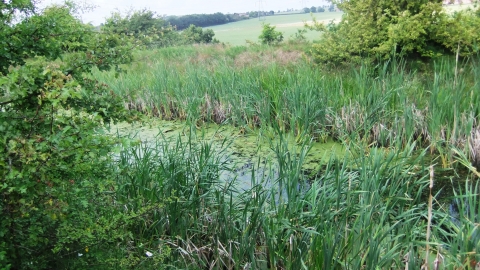
Barnsley Canal – Wilthorpe
Know before you go
Dogs
When to visit
Opening times
Open at all timesBest time to visit
March to September
About
A sinuous site comprising the course of the now-defunct Barnsley Canal gives great views over the wild, Upper Dearne Valley, its cut-off meanders and sprawling reedbeds, a mile from Barnsley town centre.
Barnsley Canal finally succumbed to mining subsidence and was closed in 1953. It now comprises of some stretches of open water with silted swamp areas and reedbeds.
To the south of the site, accessed via Smithies Lane from the car park, is an open semi-improved grassland where exquisite bee orchids can be found in summer.
The hedge to the north of the canal is the longest stretch of continuous hedge in Barnsley. It provides foraging for flocks of tits including willow tits, thrushes and bullfinches.
From the car park walking west, the canal bed is at first dry, with crack willow growing in the bed. This soon gives way to a wetter marsh before opening up into open water.
Continuing down the footpath, past the old footbridge across the canal on the left, the open water provides ideal habitat for amphibians including great crested newts. The water plants are interesting and include the only population of frogbit in the Barnsley area.
Self-set trees along the banks shade out the open water and plant communities of the canal and pose a threat to the integrity of the canal walls. We are sensitively removing these saplings and creating a better open canopy in this pioneer woodland for willow tits to colonise.
Yorkshire wildlife Trust manage the park in partnership with Barnsley Council for the benefit of local people and wildlife.
Seasonal highlights
- Spring: Birds - Willow tit; Grasshopper warbler; Great crested newt
- Summer: Plants; Frogbit; Field scabious; Yellow flag iris; Birds - Reed bunting
- Autumn: Birds - Mallard; Teal; Gadwall; Green woodpecker
- Winter: Birds - Water rail; Bullfinch; Kingfisher; Great spotted woodpecker
Directions
Public transport
Buses from Barnsley Interchange to Honeywell - Athersley South stop near the site.
By car
From M1 take A628 to Barnsley Centre. Take A61 north to Smithies, take Smithies Lane on left at traffic lights. Pass fishing pond on rihgt, after 200m park in small car park on right opposite Barnsley College Smithies annex.




